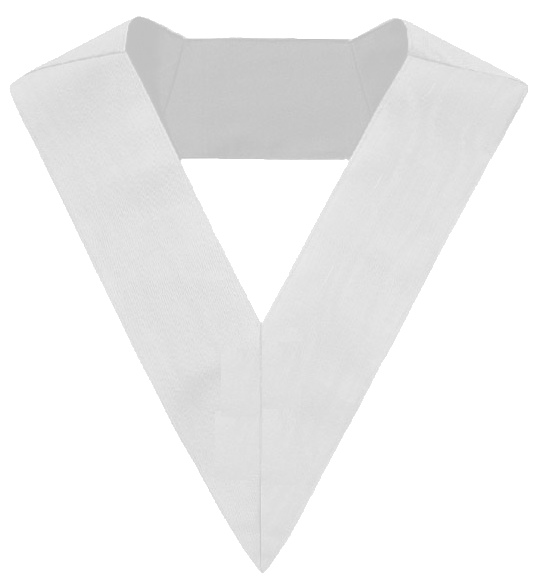ANCIENT & ACCEPTED Scottish rite: 25th° DEGREE – knight of the brazen serpent
In Summary:
This degree provides both philosophical and moral, teaching the necessity of reformation as well as repentance as a means of obtaining mercy and forgiveness. It also provides an explanation of the symbols of masonry, particularly those connected with the ancient and universal legend of Khir-Om Abi.
In fact, the Book of the Ancient Accepted Scottish Rite of Freemasonry (1884) by Charles T. McClenechan, also states that the 25th Degree: Knight of The Brazen Serpent is a symbolic representation of the ancient and universal legend of Khir-Om Abi.
Initial Note:
This degree tackles the concept of the pure, celestial, eternal soul of man. He looks within his faith, life, and God and to get a clear look at his inner self.
Regalia Notes:
The apron is white, lined, and edged with black; the white side is spotted with golden stars and the black side with silver ones. Those on the white side represent, by their positions and distances, the Pleiades, the Hyades, Orion, and Capella. Those on the black side represent the stars of Perseus, Scorpio, and Ursa Major.
In the middle of the white side is a triangle in glory, in the center of which is the name of Deity in Phoenician characters. On the flap is a serpent in a circle, with his tail in his mouth; and in the circle so formed a scarab or beetle. Over this is a star of gold, with the letter ‘R’ (for Regulus) over it; on the right side of the apron another, with the letter ‘A’ over it; and at the bottom of the apron another, with the letter ‘F’ over it.
These last three letters have the same meaning as in the order explained below. The order is a crimson ribbon, on which are embroidered the words, one under the other: OSIRIS, AHURA, OSARSIPH, MOSES. Under them, a bull, with a disk, surmounted by a crescent between his horns.
This is worn from left to right; and across it, from right to left, is worn a broad, white, watered ribbon, on which are the words ISIS and CERES over a dog’s head and a crescent. On the right breast, on the left breast, and at the crossing of these orders is a star of gold.
Under that on the right breast is the letter ‘A’ (for Antares); and under that, at the crossing of the orders, the letter ‘F’ (for Fomalhaut). On the crimson cordon is the word GEBURAH (valor) in Hebrew; and on the white, the Hebrew word AUN (force or strength). Together they mean the generative power and the productive power of nature.
The jewel is a Tau cross, of gold, surmounted by a circle – the Crux Ansata of Egypt – round which a serpent is entwined. On the upright part of the cross is engraved the Hebrew word meaning ‘he has suffered’ or ‘been wounded’, and on the arms, the Hebrew word given in the Bible for the brazen serpent is ‘Nakhustan’.
Duties are:
• Fulfil your destiny and re-create yourself by reformation,
repentance and enlarging your knowledge.
For Reflection:
• Is it possible to find your way to Heaven alone?
Lessons:
• Man is composed of the flesh, the soul, and the intellect.
Man is a reflection of the Divine. Do not weary God with petitions.
Important Symbols:
• Sun, moon, brazen serpent, Pythagorean right triangle.
Additional Notes:
Islam, or Mohammedanism as Pike calls it, has been one of the major religions in the world for over eleven centuries. In an older form of this degree, some Islamic doctrine is presented through the re-creation of initiation into the elite group among the Druse, a quasi-Islamic religious sect living in the Lebanon area; we encountered the Druse previously in the 22nd degree, Prince of Libanus.
The Druse are particularly known for secrecy and silence regarding their religious beliefs. Their vows of secrecy are so effective that very little is factually known of their beliefs. Any search for such an understanding is inhibited by the Druse practice of assuming the beliefs of the religion of their surrounding for the purpose of concealing their own doctrines, however, it is believed the Druse religious system is basically Islamic intermingled with Gnostic, Christian, and Hebrew doctrine.
Pike radically changed this degree in his reworking of the old ritual of the Rite. The characters in the old rituals were Hebrew and that is, Moses, Aaron, Joshua, and the candidate, a traveler. in Pike’s version, the presiding officer is called the Hakam, meaning “wise” or “skilled” in Arabic, and the candidate represents an Ismaeli (a member of one of the major sects of Islam) in the area around Lebanon during the reign of Sayeed Abdullah, Great Emir of the Druses in 1450 AD.
The candidate seeks initiation into the Druse system so that he might become an Akal, a disciple of the Order of Truth. By 1450 the Druse and Ismaeli were clearly dependent Islamic sects. Although it is believed the Druse do not recognize conversion to their faith, this may not have been known by Pike when he wrote this degree. In any event, history provides the general legend for the degree and Pike provides the details. In both cases, the emphasis is on the religion of Islam.
Sources:
Purchase ‘A Bridge To Light‘ by Rex R. Hutchens
Purchase ‘Morals & Dogma‘ by Albert Pike.
Additional Source:
Purchase ‘The Book of the Ancient and Accepted Scottish Rite of Freemasonry’ by Charles T. McClenachan.

‘Knight of the Brazen Serpent’
Please view the video on the left, for a more detailed explanation of the 25th° Degree.




